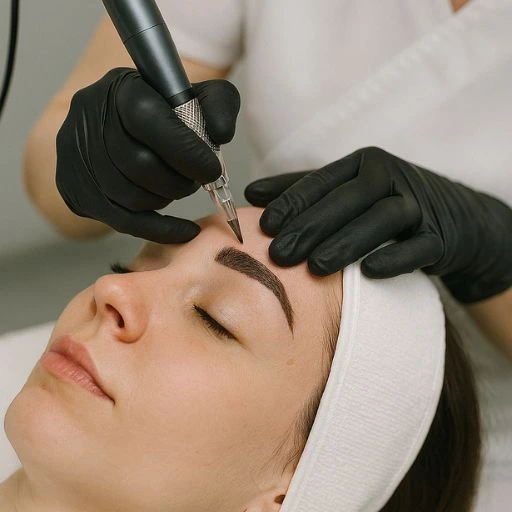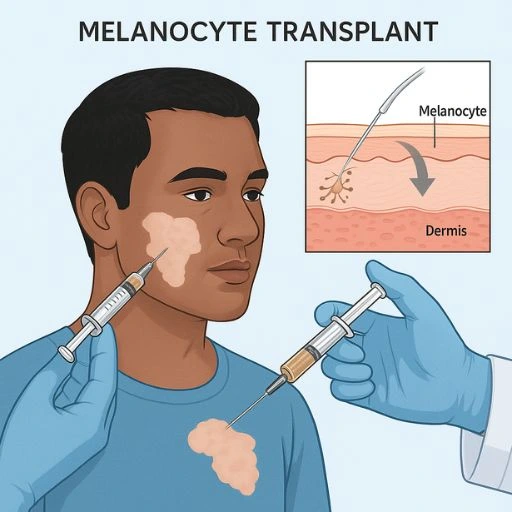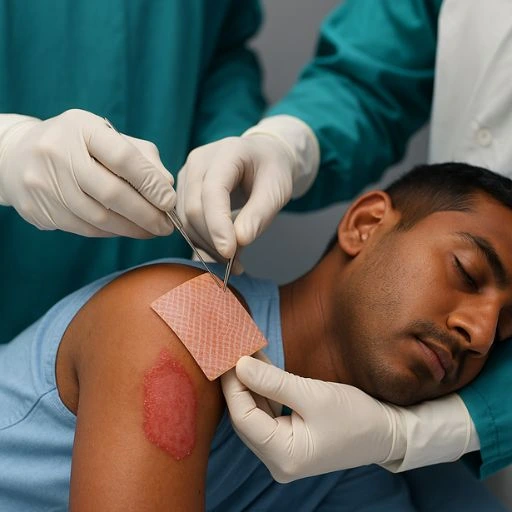
Top-rated skin clinic in South Delhi with advanced & affordable treatments
At Care Well Aesthetics, we proudly stand as one of the best skin clinics in South Delhi. We offer a wide range of advanced skin treatments in Delhi NCR that restore, rejuvenate, and protect your skin.
Whether you’re struggling with acne, pigmentation, or signs of aging, we’ve got you covered. Our expert dermatologists use only FDA-approved technologies to ensure safe and lasting results. Moreover, we customize each treatment based on your skin type and goals. For those seeking global techniques, we also offer Korean skin treatment in Delhi for deep hydration and glow.
Explore the best skin treatments in Delhi and experience personalized care like never before.
👉 Thousands have transformed their skin with us — now it’s your turn. Let’s start your journey to healthy, glowing skin today.
Book a Quick Skin Consultation
Our Skin Treatments
Explore our advanced skin treatments that not only rejuvenate but also enhance and restore your skin’s health. Moreover, each treatment is thoughtfully curated to target specific concerns and, as a result, deliver visible and long-lasting results.
Laser Skin Treatments

Laser Tattoo Removal
Say goodbye to unwanted tattoos with advanced Q-Switch laser technology. Ensuring safe and effective ink removal.
Results: Gradual fading of tattoo ink with minimal discomfort.
Sessions: 4–8 sessions depending on size
Price: ₹1,000–₹3,000 per inch

Fractional Laser Treatment
Achieve smooth, hair-free skin with pain-free laser technology, designed to reduce hair growth permanently in targeted areas.
Results: Improved texture, reduced scars and wrinkles.
Sessions: 2–4 sessions
Price: ₹4,000–₹10,000 per session

Carbon Laser Facial
Deeply exfoliate and rejuvenate your skin with a carbon laser facial treatment, enhancing skin texture, tone, and glow.
Results: Brighter, more even skin tone, reduced pigmentation, tightened pores.
Sessions: 1–2 sessions/month
Price: ₹2,000–₹5,000 per session
Skin Rejuvenation & Glow Treatments

Hydrafacial
Deeply cleanse, exfoliate, and hydrate your skin with a multi-step Hydrafacial procedure for instant glow and revitalization.
Results: Instant glow, improved skin texture, deep hydration, and unclogged pores.
Sessions: 1–2 per month for maintenance
Price: ₹3,000–₹6,000 per session

Microdermabrasion
Gently polish away dead skin cells, reduce pigmentation, and improve overall skin tone and brightness.
Results: Smoother skin texture, reduced pigmentation, and mild scar fading.
Sessions: 4–6 sessions recommended
Price: ₹1,500–₹3,500 per session

Permanent Makeup
Get smudge-proof, long-lasting beauty with permanent makeup for eyebrows, eyeliner, and lips etc.
Results: Defined features with natural-looking results that last for years.
Sessions: 1–2 sessions depending on area
Price: ₹6,000–₹20,000 per area
Acne & Scar Treatments

Acne Scar Reduction
Minimize acne scars using advanced techniques like Fractional CO2 Laser and Microneedling.
Results: Smoother skin texture, reduced pitted scars, and improved overall appearance.
Sessions: 3–6 sessions depending on severity
Price: ₹4,000–₹10,000 per session

Chemical Peels
Exfoliate and renew your skin with Chemical Peels, designed to treat acne, pigmentation, and uneven skin tone.
Results: Reduced acne, even skin tone, faded pigmentation, and enhanced skin clarity.
Sessions: 3–6 sessions based on skin concern
Price: ₹1,500–₹4,000 per session

Microneedling
Boost collagen production with Microneedling, helping to reduce scars, fine lines, and improve skin texture.
Results: Reduction in scars, fine lines, large pores, and rough texture.
Sessions: 3–5 sessions spaced 3–4 weeks apart
Price: ₹3,500–₹7,000 per session
Pigmentation & Skin Brightening

Skin Whitening Treatment
Enhance your complexion with Skin Whitening Treatments, reducing pigmentation and promoting a brighter skin tone.
Results: Improved skin tone, reduced pigmentation, and visibly brighter complexion.
Sessions: 4–6 sessions for optimal results
Price: ₹3,000–₹7,000 per session

Dark Circles Removal
Eliminate Target under-eye pigmentation and puffiness using laser or topical treatments.
Results: Lightened dark circles, firmer under-eye skin, and refreshed look.
Sessions: 3–5 sessions depending on intensity
Price: ₹2,500–₹6,000 per session

Birthmark Removal
Safely remove birthmarks using precise laser technology with minimal discomfort.
Results: Faded or fully removed birthmarks with clearer, even-toned skin.
Sessions: 2–6 sessions based on birthmark type and depth
Price: ₹3,000–₹8,000 per session
Medical Skin Treatments

Eczema & Psoriasis Treatment
Get expert dermatology care for chronic skin conditions, ensuring relief from irritation and discomfort.
Results: Reduced flare-ups, soothed skin, and improved skin barrier health.
Sessions: Ongoing treatment based on condition severity
Price: ₹1,500–₹3,000 per session

Laser Moles & Warts Removal
Eliminate unwanted moles and warts with safe and painless laser removal techniques.
Results: Smooth skin surface, minimal to no scarring.
Sessions: Usually 1–2 sessions required
Price: ₹2,000–₹5,000 per mole or wart

Skin Allergy & Infection Treatments
Find effective solutions for skin allergies, rashes, and fungal infections with expert dermatology care.
Results: Fast relief from itching, redness, and irritation with long-term management.
Sessions: Based on diagnosis and response to medication
Price: ₹1,000–₹2,500 per consultation
Vitiligo & Skin Grafting Treatments

Vitiligo Treatment
Explore advanced solutions like medical therapy, PUVA, and surgical options to restore pigmentation.
Results: Gradual repigmentation of white patches with improved skin tone
Sessions: Varies by treatment type and patch area (6–12 sessions typical)
Price: ₹2,000–₹5,000 per session

Melanocyte Transplant
Restore natural color in vitiligo patches using cutting-edge melanocyte transplantation.
Results: Permanent restoration of skin color in stable vitiligo patches
Sessions: Usually completed in 1–2 sittings for eligible cases
Price: ₹15,000–₹40,000 based on area

Skin Grafting Surgery
Rebuild damaged or lost skin from burns, injuries, or chronic disease using surgical skin grafting.
Results: Rebuilt skin structure, improved appearance, and restored function
Sessions: Typically requires one-time procedure with follow-ups
Price: ₹20,000–₹70,000 depending on graft size and technique
💰 Skin Clinic in Delhi – Price Transparency
At Care Well Medical Centre, we believe in honest and upfront pricing. Our consultation and treatment charges vary based on the procedure, skin condition, and number of sessions needed.
Here’s a general price range for our popular treatments:
- HydraFacial Treatment – ₹3,000 to ₹6,000 per session
- Laser Tattoo Removal – ₹1,000 to ₹3,000 per inch
- Chemical Peels – ₹1,500 to ₹4,000 per session
- Microneedling – ₹3,500 to ₹7,000 per session
- CO2 Fractional Laser – ₹4,000 to ₹10,000 per session
- Skin Whitening Treatment – Starting at ₹3,000
💡 Prices may vary based on individual skin type, concern, and session frequency.
📞 For a personalized quote, call us at +91 96679 77499 or book a consultation today.
Before and After Results

Why Choose Care Well Medical Centre for Skin Treatments in Delhi?
At Care Well Medical Centre, we go beyond basic skin care. Here’s why patients across South Delhi and NCR trust us:
- Experienced Dermatologists: Our team includes certified skin specialists with over 15 years of experience.
- Advanced Technology: We use FDA-approved lasers and skin care systems for safe, visible results.
- Customized Treatments: We assess your skin condition and tailor every session to your unique needs.
- Proven Results: Our before-and-after transformations speak for themselves.
- Trusted Reputation: Hundreds of satisfied patients recommend us as the best skin clinic in South Delhi.
- Hygienic & Comfortable Facility: We maintain international safety standards in a clean, modern environment.
- Transparent Pricing: No hidden costs — only honest advice and results-driven care.
What Our Patients Say About Their Skin Treatment Experience
Book a Consultation for Your Skin Treatment
Looking for the best hospital for skin treatment in Delhi with trusted results?
📅 Book a consultation now and discover why Care Well Medical Centre is rated among the skin clinic in Delhi best by satisfied clients across South Delhi and NCR.
How to Reach Care Well Medical Centre, Delhi
We are located in the heart of South Delhi, easily accessible from major nearby areas like Greater Kailash, Nehru Place, Alaknanda, and Kalkaji.
🏥 Address:
Care Well Medical Centre
House No. 1, NRI Complex, Chittaranjan Park (C.R. Park), NRI Colony, Mandakini Enclave Colony, Alaknanda, New Delhi, Delhi 110019
🗺️ Google Map Location:
🧭 Nearby Landmarks:
- Just 5 minutes from Greater Kailash Metro Station
- Close to Nehru Place and Alaknanda Market
- Free parking available near the clinic gate
FAQs – Skin Treatments in Delhi
At Care Well Medical Centre, the most requested treatments include laser hair removal, Hydrafacial, chemical peels, acne scar reduction, and skin whitening therapies.
Care Well Medical Centre is one of the best skin clinics in South Delhi, offering advanced skin solutions, FDA-approved technologies, and personalized treatment plans.
The cost of skin treatments in Delhi ranges from ₹1,500 to ₹10,000 per session, depending on the procedure. We offer transparent pricing based on your skin condition and goals.
It depends on the treatment type. For example, chemical peels may need 3–6 sessions, while laser procedures often show results in 2–4 sittings. We assess your skin and create a custom plan.
Yes. We use dermatologist-tested, FDA-approved skin technologies that are safe for all skin types, including sensitive skin. Our team customizes treatments for your comfort and safety.
Most of our treatments are non-invasive with minimal downtime. You may experience slight redness or dryness for 24–48 hours after certain procedures like laser or peels.
Yes, we offer Korean-inspired skin treatments in Delhi, including Hydrafacial, skin brightening facials, and deep hydration therapies for glass-like skin.
Absolutely. We recommend starting with a skin analysis and consultation so our dermatologists can recommend the best solution for your skin concerns.
